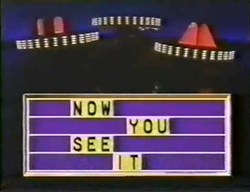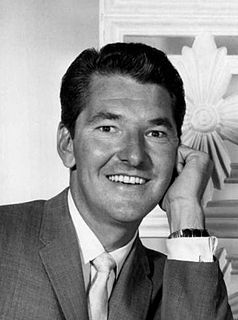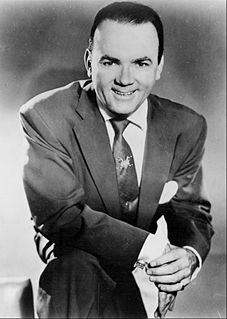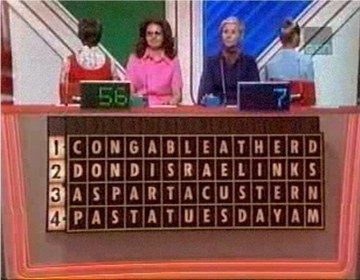
Beat the Clock is a television game show that involves people trying to complete challenges to win prizes while faced with a time limit. The show was a creation of Mark Goodson-Bill Todman Productions and first premiered on March 23, 1950.
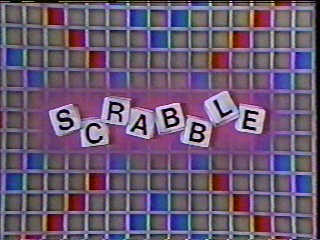
Scrabble is an American television game show that was based on the Scrabble board game. Muriel Green of Exposure Unlimited came up with the initial concept for a television game show based on the Scrabble board game. During 1983 Green convinced Selchow and Righter, who at that time owned the Scrabble board game, to license Exposure Unlimited the right to produce the television show. Exposure Unlimited hired and co-produced the show with Reg Grundy Productions and licensed the show to NBC. It ran from July 2, 1984, to March 23, 1990, and again from January 18, 1993, to June 11, 1993, with both runs airing on NBC. A total of 1,335 episodes were produced from both editions; Chuck Woolery hosted both versions of the series. Jay Stewart was the announcer for the first year and was replaced by Charlie Tuna in the summer of 1985, who announced for the remainder of the original version and the entirety of the 1993 revival.

Password is an American television game show which was created by Bob Stewart for Goodson-Todman Productions. The host was Allen Ludden, who had previously been well known as the host of the G.E. College Bowl. In the game, two teams, each composed of a celebrity player and a contestant, attempt to convey mystery words to each other using only single-word clues, in order to win cash prizes.

Lingo is an American television game show with multiple international adaptations. Three Lingo series have aired in the United States. The first was aired in daily syndication from September 28, 1987 until March 25, 1988, and taped at BCTV in Burnaby, British Columbia. A revival/reboot of the series debuted on Game Show Network (GSN) on August 5, 2002 and ended in 2007 after running for a total of six seasons. A slightly reworked version of the 2002 series debuted on GSN on June 6, 2011 and ended its run on August 1 of the same year.
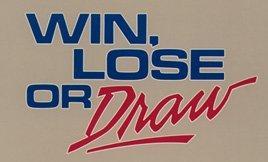
Win, Lose or Draw is an American television game show that aired from 1987 to 1990 in syndication and on NBC. It was taped at CBS Television City, often in Studios 31, 33, and 43 at various times. It was co-produced by Burt & Bert Productions and Kline & Friends for Disney's Buena Vista Television. It has also had two versions on The Disney Channel: Teen Win, Lose or Draw from 1989 to 1992, and a revived version known as Disney's Win, Lose or Draw which aired in 2014.
The Joker's Wild is an American television game show that has aired at different times since the 1970s. Contestants answer questions based on categories determined randomly by a mechanism resembling a slot machine. The show's title refers to the game's slot-machine mechanism also having jokers.

Chain Reaction is an American game show created by Bob Stewart, in which players compete to form chains composed of two-word phrases.
Double Talk is an American game show that aired on the ABC network from August 18 to December 19, 1986. The show was a Bob Stewart-produced word game which borrowed elements from Stewart's previous show Shoot for the Stars and his then-current editions of Pyramid.
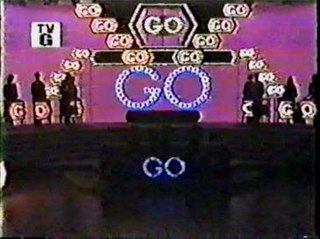
Go is an American television game show created by Bob Stewart and aired on NBC from October 3, 1983, to January 20, 1984. The show featured two teams, each composed of four contestants and a celebrity. The teams had to construct questions one word at a time to convey a word or phrase to their teammates. The concept of Go was based on a bonus round used on Chain Reaction, another game show created by Stewart.

Child's Play is an American television game show in which adult contestants tried to guess words based on definitions given by children. The Mark Goodson-produced series debuted on CBS from September 20, 1982 at 10:30 am EST. That time slot was held by Alice for a little over two years. Despite running for almost a year, Child's Play was never able to make ratings headway against either Wheel of Fortune or Sale of the Century, two hit game shows that NBC aired opposite it; CBS ended the series on September 16, 1983 and replaced it with Press Your Luck, which performed much better for CBS. This was the first game show created and produced solo by Mark Goodson after the death of his longtime business partner Bill Todman in 1979; all subsequent shows made by Goodson were credited as "A Mark Goodson Television Production".
Time Machine is an American game show where contestants compete to answer trivia questions about popular culture and recent history to win prizes. The show aired on NBC from January 7 through April 26, 1985, and was hosted by John Davidson. Charlie Tuna was the announcer, with Rich Jeffries as his substitute. Reg Grundy Productions produced the series, and upon its premiere Time Machine was one of three Grundy series airing on NBC.

BrainTeaser was a British game show based on the original Dutch format of Puzzeltijd, first broadcast in 2002 produced by Endemol UK subsidiary Cheetah Productions.

You Don't Say! is an American television game show that had three separate runs on television. The first version aired on NBC daytime from April 1, 1963 to September 26, 1969 with revivals on ABC in 1975 and in syndication from 1978 to 1979. The last two incarnations were executive produced by Ralph Andrews and produced and directed by Bill Carruthers.
PDQ and Baffle are American television game shows created by Heatter-Quigley Productions. Both shows' objective was to guess a given word or phrase in the shortest amount of time with the fewest letters given as possible.
Snap Judgment is an American daytime game show hosted by Ed McMahon and announced by Johnny Olson which ran on NBC from April 3, 1967 to March 28, 1969 at 10:00 AM Eastern. The program was created and produced by Mark Goodson and Bill Todman.

Stumpers! is a game show hosted by Allen Ludden that aired on NBC from October 4 to December 31, 1976. Lin Bolen, former head of NBC Daytime Programming, developed the show. Bill Armstrong was the program's regular announcer, with Charlie O'Donnell filling in for several episodes. The show featured game play similar to Password, with two teams attempting to guess the subject of puzzles based on clues provided by their opponents.
Camouflage is a television game show airing on GSN. Hosted by Roger Lodge, and billed as "the hidden word game where the answer is always right in front of you", Camouflage originally aired for 40 episodes from July 2 to 27, 2007. The show is a word game, with contestants searching for a hidden word or phrase in a string of jumbled letters. The show is produced by Enjoy the Ride Productions in association with McB Entertainment.
Now You See It was a Scottish television game show that aired mostly in Scotland throughout its run. It was shown to a lesser degree across some of the ITV Network. It was based upon the U.S. version of the show and used the US show's "halftime cue" as its theme music.
Now You See It was an Australian children's game show that aired on the Seven Network from 1985-1993. It is based on the US show of the same title and was originally hosted by Mike Meade from 1985 and 1990 and "co-hosted" by a robot named "Melvin" who was a Tomy Omnibot toy, and pitted individual children against each other. Melvin's uncle Morton had his own segment on the show entitled "Morton's Mouldy Movies", in which Morton would narrate stories in a grandfatherly voice accompanied by footage from silent film shorts.
Cleverdicks is a game show that originally aired on Sky Atlantic, hosted by Ann Widdecombe, now shown on Challenge. Four contestants compete each episode for the right to call themselves "cleverdicks" and play for a cash jackpot. As explained by host Widdecombe at the top of the first episode, a cleverdick is a person who is "irritatingly and ostentatiously knowledgeable or intelligent." The question material is therefore primarily academic in nature.
